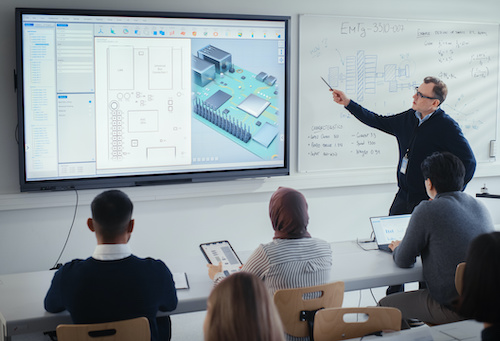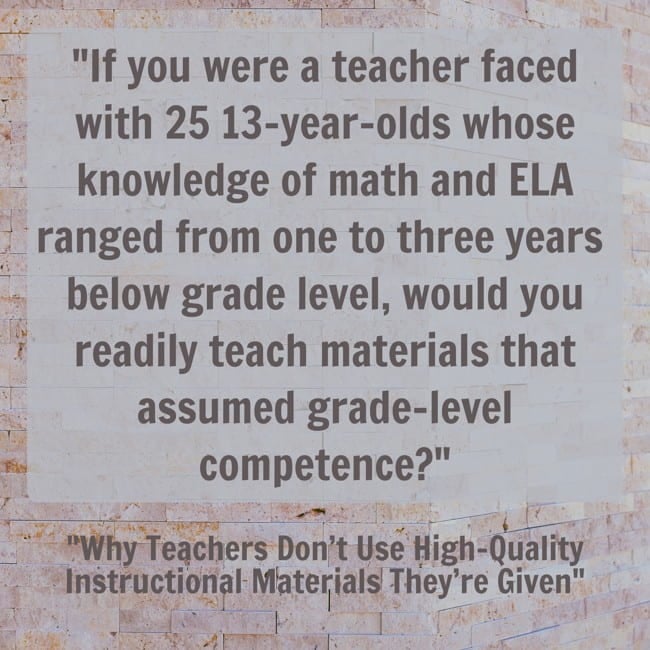Key points:
When selected carefully, interactive whiteboards can maximize student engagement
Smarter Classrooms for Today and Tomorrow
5 digital resources to inspire curiosity and engage students
For more news on edtech tools for learning, visit eSN’s Digital Learning hub
During the COVID-19 pandemic, school districts across the United States received a timely infusion of funds to upgrade edtech in the classroom. As of 2023, 92 percent of K-12 schools in the U.S. use interactive whiteboards for their daily lessons.
Given that today’s students are digital natives, it makes sense for schools to invest in modern educational technology such as interactive whiteboards. After all, these students likely learned their ABCs and 123s using their parents’ smartphones or tablets.
Of course, maintaining this smart technology can be a hefty investment. So, school districts should also take steps to ensure they get the most bang for their buck.
Why it’s important to maximize usage and value of this investment
Acquiring and using an interactive whiteboard in the classroom is already a positive development. It immediately replaces at least three archaic pieces of school equipment: a digital projector, a whiteboard, and a TV video player. Instead, students learn from an all-in-one multimedia machine that features full interactivity.
Academic studies confirm that interactivity and active learning can greatly enhance student engagement in the classroom. What’s more, both teachers and students seem to enjoy learning better when they use interactive whiteboards. That’s why it’s crucial to make sure these tools are available during school hours.
Constant use of your edtech equipment can ensure a swift return on investment (ROI). But how do you ensure your interactive whiteboards work as advertised? More importantly, how can your instructors maximize the use of the equipment and minimize its downtime?
Interactive whiteboard features you can maximize
An interactive whiteboard includes many modern features that help enhance active learning and increase engagement. To make the most of your school district’s edtech investment, these features should be utilized to the fullest during classroom sessions.
Advanced touchscreen technology in the classroom
When choosing the best interactive whiteboards, look for ones that feature multi-touch technology. This enables the whiteboard to recognize multiple touchpoints instead of just one point at a time.
Multi-touch capability can greatly enhance the learning experience. For instance, this technology allows for expanded controls when using the touchscreen. It lets a user pinch, zoom, or swipe the surface to activate functions. What’s more, the number of fingers used when performing these actions will trigger a different response. This puts a wide range of controls literally at your fingertips.
In addition, multi-touch allows two or more students to interact with a single touchscreen. This lets instructors hold competitive quizzes or have multiple students solve puzzles at the same time.
Cloud connectivity
Using cables or memory cards to transfer files or install updates is an inefficient method that can cause a lot of downtime. It’s also unnecessary, as wireless connectivity is already a standard feature for most technology in the classroom. So, make sure your interactive whiteboard investments support cloud systems that use secure and redundant connections.
Why is cloud connectivity important? During its lifespan, an interactive whiteboard will need continuous updates and fixes to its operating system, firmware, and application software. Connecting via cloud systems ensures that all needed files are available for download. This means installations and updates can be scheduled anytime and processed much faster.
Access level control and user permissions
Not all interactive whiteboard users need the same access levels. For instance, regular operators such as instructors and teachers launch learning apps and access the connected learning management system (LMS) for files and modules. Meanwhile, superintendents and principals will need to access student and teacher information and the collected data from users. Admins and IT staff need access to the operating system to perform maintenance and management tasks.
Assigning different user permission levels is a valuable feature that keeps private data and system files safe. This also ensures that only authorized users can look at private student files, as required by federal and state privacy laws.
Security and safety
Curious students will often try to hack into the interactive whiteboard and install apps or games, copy files, or even alter data. But remote security features should easily detect unusual device activity and automatically launch security measures.
Once alerted, admins can freeze or shut down devices to prevent further attempts at access. In the unlikely case that the touchscreen is taken off-site, geofencing can disable devices that are outside their permitted locations. When everything else fails, admins can remotely wipe data from devices to prevent data theft.
Don’t forget the right device management platform for your classroom technology
An interactive whiteboard can be a significant cost. The right device management platform makes sure your classroom technology investments work correctly and receive proper maintenance and management.
What’s more, it ensures the availability of low-level management features that keep all software and firmware updated to the latest versions. Cloud connectivity lets admins automatically schedule and perform updates during off hours instead of productive school hours. Even better, it can perform these fixes on one specific unit, multiple devices, or across the entire fleet.
The right device management software also provides robust security features that keep edtech devices from falling into the wrong hands. After all, data privacy is a serious matter that requires strict security measures. With student information at stake, the right device manager can spell the difference between data leaks and secure student records.
Make the most of your classroom technology investments
The right classroom technology is crucial to give students the best learning experiences. But simply providing devices such as interactive whiteboards to classrooms isn’t enough. Superintendents must also ensure that their education technology investments have the latest features. This includes multi-touch capability and cloud support to maximize learning opportunities.
What’s more, school districts should invest in the right device management platforms to ensure devices perform optimally at all times. The right device manager can fulfill the specific management, maintenance, and security requirements of your learning investments.
We all know the value of modern edtech equipment in enriching the lives of today’s students. Acquiring these devices is only the first step. Admins must also make sure they work as designed and remain optimized and updated at all times.
During the COVID-19 pandemic, school districts across the United States received a timely infusion of funds to upgrade edtech in the classroom. Digital Learning, Digital Learning Tools, eSchool Media, Featured on eSchool News, classroom, classroom technology, digital, digital learning, districts, edtech, funds, interactive, interactive whiteboards, K-12 eSchool News









